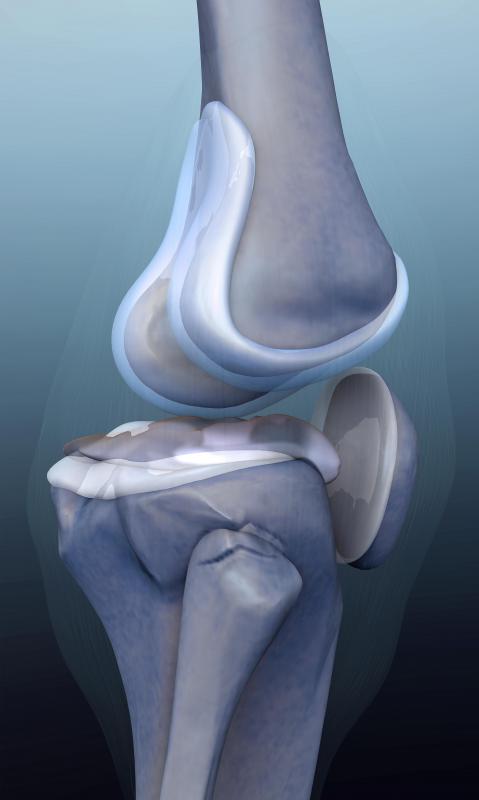At TheHealthBoard, we're committed to delivering accurate, trustworthy information. Our expert-authored content is rigorously fact-checked and sourced from credible authorities. Discover how we uphold the highest standards in providing you with reliable knowledge.
What Are Articular Surfaces?
Articular surfaces are the portions of bone that come into contact with one another within a joint. These bony surfaces may be flush with one another, as in the suture joints between the bones of the cranium, or they may be separated by a cartilaginous disk, as in the knee joint. Whatever the joint type, the adjacent bones are joined either by ligaments or cartilage. In addition, joints tend to be classified according to their structure — that is, according to the shape of their articular surfaces. For instance, sellar joints like that found at the base of the thumb are so named for the way in which the ends of the adjoining bones curve about each other like two saddles, therefore they are also known as saddle joints.
The three structural classes of joints are fibrous joints, cartilaginous joints, and synovial joints. In a fibrous joint, the articular surfaces are almost completely flush, separated only by a matrix of collagen-based connective fibers. An example can be seen in the cranium of the skull, where the bones surrounding the brain fit together like curved plates. Much like the plates found in the Earth’s crust, however, the edges of these articular surfaces are very irregular, gradually fusing together during the first couple of years of life.

In cartilaginous joints the articular surfaces are linked by flexible cartilage that permits a small amount of movement between the adjoining bones. This cartilage covers the ends of the bones and also fills the space between the bones. The bony surfaces are typically rough, as in the manubriosternal joint in the breast bone, where the manubrium or top portion of the sternum meets the body of the sternum.

Synovial joints are the most numerous in the body. These are the movable joints such as the shoulder and knee joint. They are classified according to both their structure and function, as the shape of the articular surfaces determines their function. In a planar or gliding joint, for instance, the articular surface of each bone is relatively flat and smooth so that the bones may slide against each other.

A ball-and-socket joint like the shoulder joint, on the other hand, features a rounded head of one bone cupped within a similarly rounded socket of another. As such, the articular surfaces in a ball-and-socket joint are much larger. They cover a more substantial surface area than those seen in other joint types.
AS FEATURED ON:
AS FEATURED ON:













Discussion Comments
What is irregularity of the articular surfaces?
Post your comments